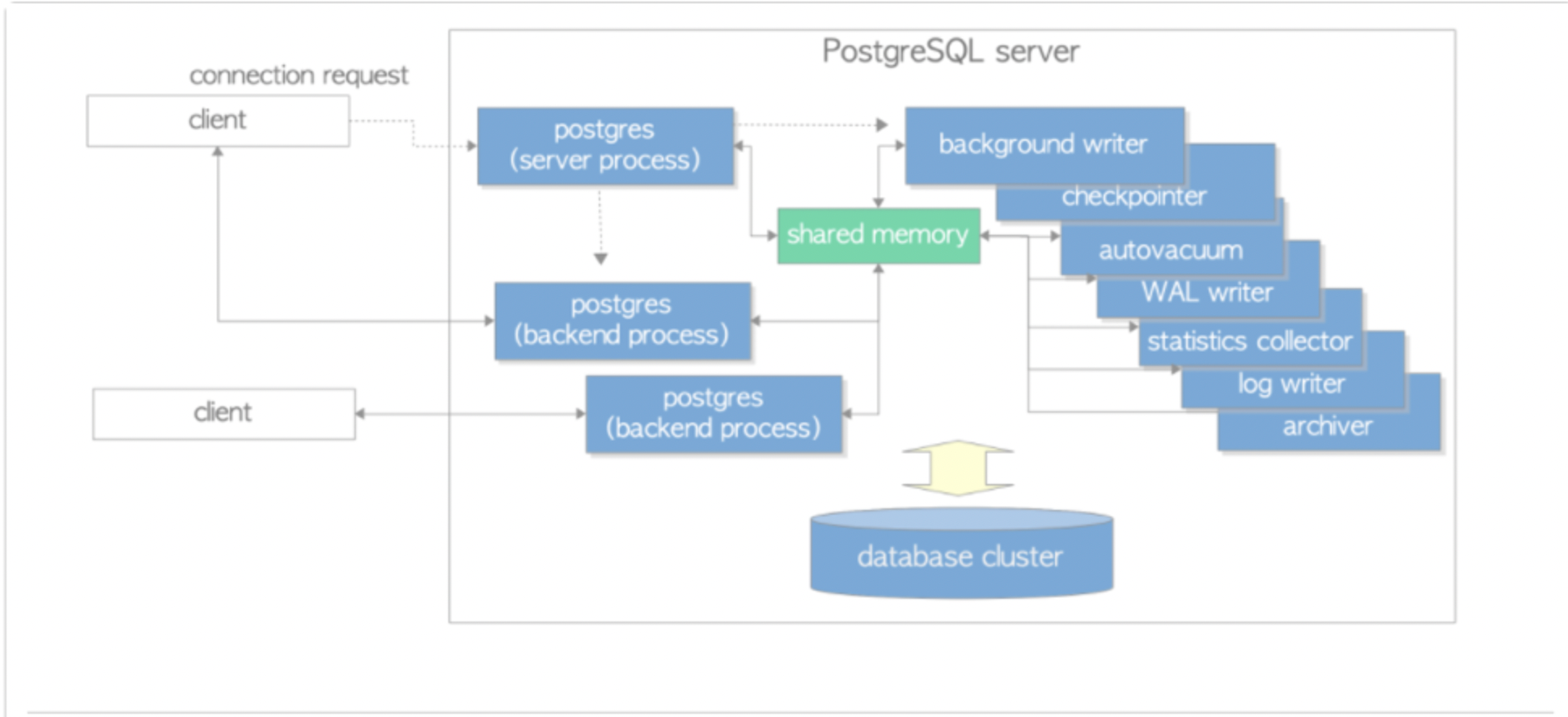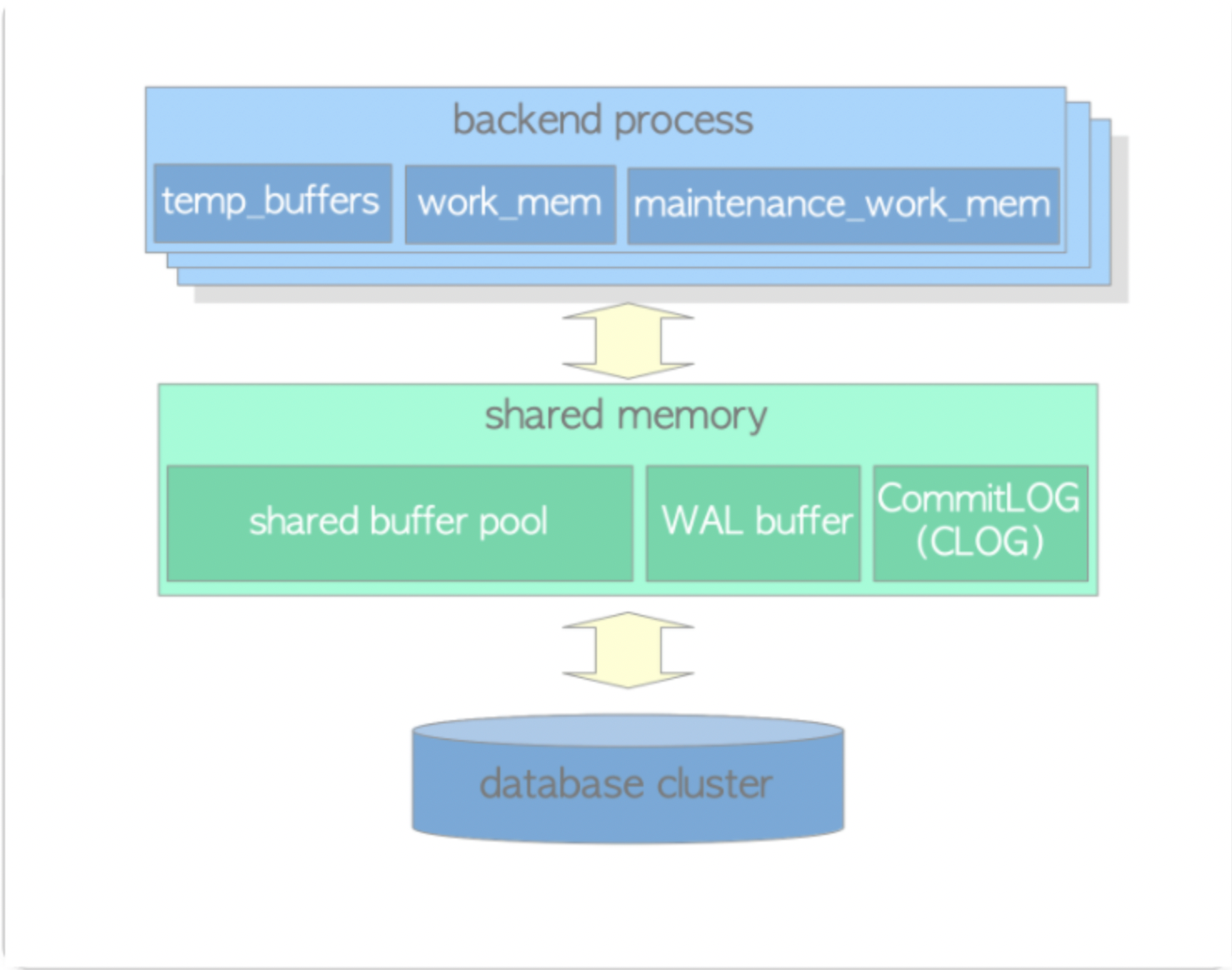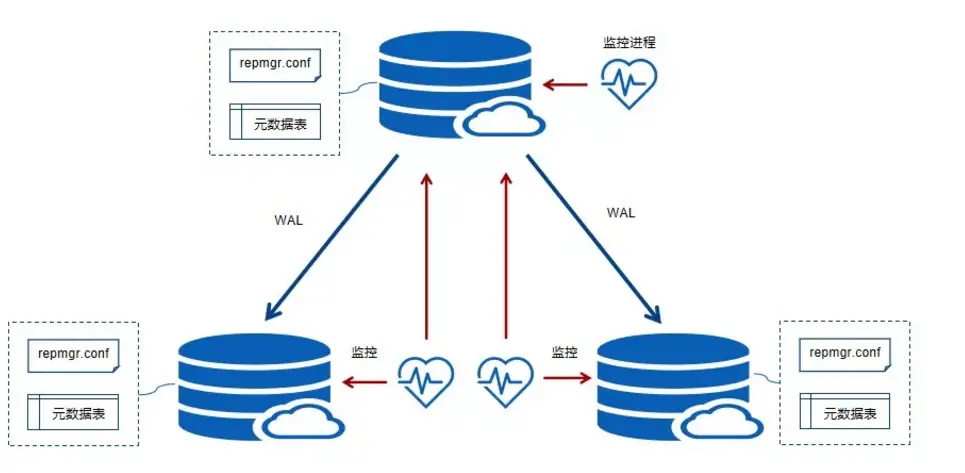PG初识
PG数据库是一种典型的C/S模型应用,不同的客户端通过TCP/IP进行连接、每个连接启动一个fork进程(多进程数据库)。
一、pg逻辑架构
1.1 pg与MySQL异同对比
逻辑架构 | postgres | MySQL |
实例 | 多进程 | 当进程多线程 |
数据库 | 一个实例下可创建多个db,各个db下相互隔离 | 一个实例下可创建多个db,同实例下各db可互相访问 |
模式 | 一个db下可创建多个schema,各schema下可互相访问 | 没有schema的概念、或者说schema等同于db |
表/视图 | table、view | table、view |
行 | tuple | row |
表空间 | 默认表空间、自定义表空间 | 独立表空间、共享表空间 |
1.2 索引
1、pg数据库中主要支持以下几类索引:
1)B-tree索引,适合等值/范围查询
2)hash索引,只能针对等值查询
3)GiST索引,不是一种单独的索引而是一种架构,可以在这种架构上实现不同的索引策略
4)SP-GiST,空间分区索引
5)GIN索引,反转索引
2、索引的创建
一般的索引创建会阻塞对应表的DML操作,这种情况下我们可以通过并发创建索引来创建索引,并发创建索引的过程中不会阻塞相关的DML操作。但是值得注意的几点是:1)若执行并发创建索引被中断,会留下一个无效索引,需要手动删除;2)pg的重建索引不支持concurrently,可以手动创建新索引,后续删除旧索引。
## 普通的创建索引 create index index_name on tbl_name(col); ## 并发创建索引 create index concurrently idx_name1 on t1(name); ## 删除索引(索引名称schema内唯一,所以不需要指定表名) drop index idx_name
1.3 用户权限
PG的权限按以下几个层次进行管理:
1)首先管理附在用户特殊属性上的权限,如超级用户的权限、创建数据库的权限、创建用户的权限、Login的权限,等等
2)然后是在数据库中创建模式的权限
3)接着是在模式中创建数据库对象的权限,如创建表、创建索引等等
4)之后是查询表、向表中插入数据、更新表、删除表中数据的权限
5)最后是操作表中某些字段的权限
1.4pg与MySQL语法上的异同
操作 | postgres | mysql |
数据库 | create/drop database dbname [option] | create/drop database dbname [option] |
模式 | create/drop schema schema_name [option] | - |
表 | create/drop table tbl_name [option] | create/drop table tbl_name [option] |
表空间 | create tablespace test2 location 'xx'; | - |
查询所有数据库 | \l | show databases |
进入数据库 | \c dbname | user dbname |
查看当前schema下所有表 | \d | show tables |
查看表结构信息 | \d tbl_name | desc tbl_name |




